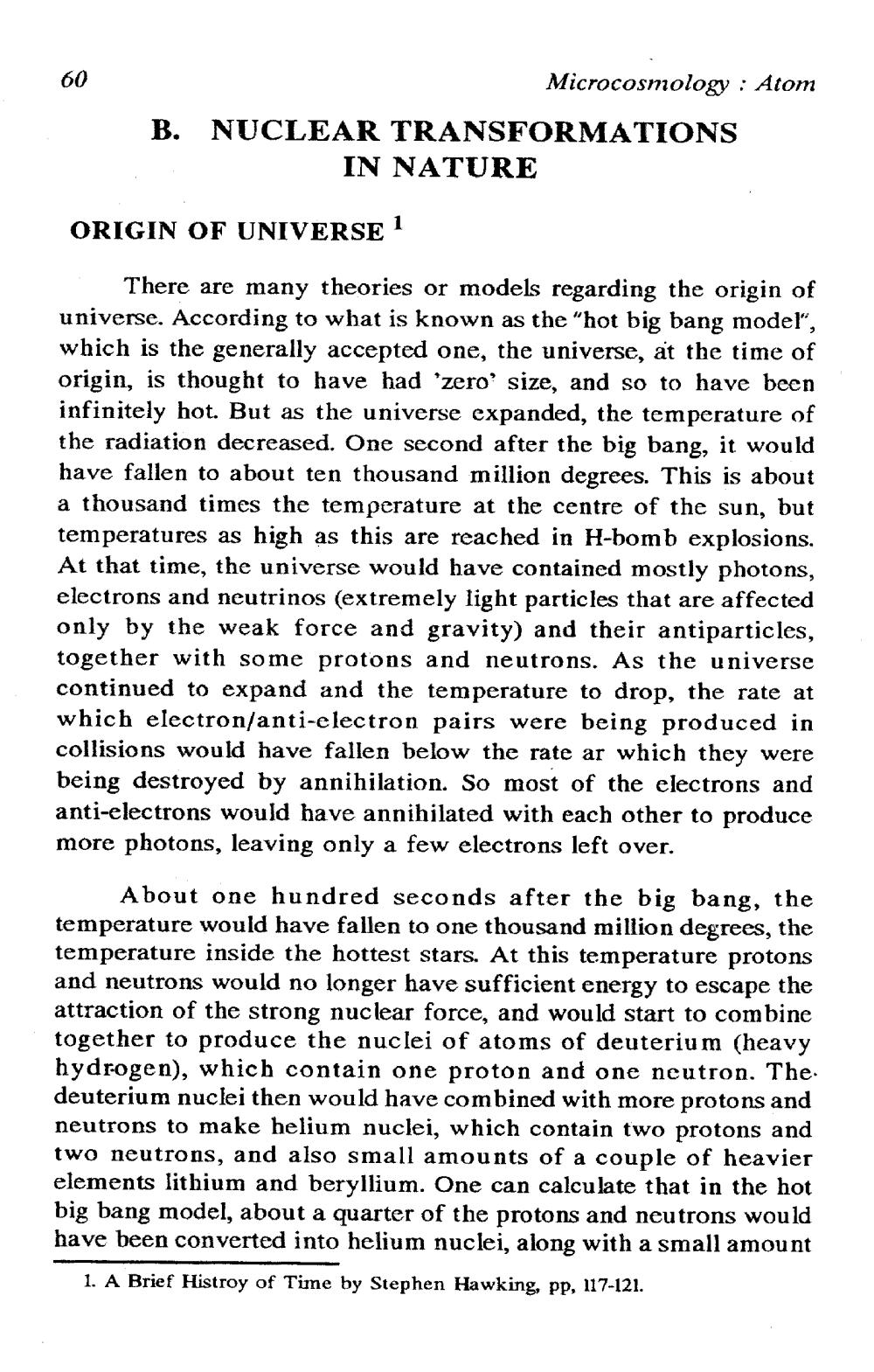________________
Microcosmology : Atom B. NUCLEAR TRANSFORMATIONS
IN NATURE
ORIGIN OF UNIVERSE 1
There are many theories or models regarding the origin of universe. According to what is known as the "hot big bang model", which is the generally accepted one, the universe, at the time of origin, is thought to have had 'zero' size, and so to have been infinitely hot. But as the universe expanded, the temperature of the radiation decreased. One second after the big bang, it would have fallen to about ten thousand million degrees. This is about a thousand times the temperature at the centre of the sun, but temperatures as high as this are reached in H-bomb explosions. At that time, the universe would have contained mostly photons, electrons and neutrinos (extremely light particles that are affected only by the weak force and gravity) and their antiparticles,
ther with some protons and neutrons. As the universe continued to expand and the temperature to drop, the rate at which electron/anti-electron pairs were being produced in collisions would have fallen below the rate ar which they were
ng destroyed by annihilation. So most of the electrons and anti-electrons would have annihilated with each other to produce more photons, leaving only a few electrons left over.
About one hundred seconds after the big bang, the temperature would have fallen to one thousand million degrees, the temperature inside the hottest stars. At this temperature protons and neutrons would no longer have sufficient energy to escape the attraction of the strong nuclear force, and would start to combine together to produce the nuclei of atoms of deuterium (heavy hydrogen), which contain one proton and one neutron. The. deuterium nuclei then would have combined with more protons and neutrons to make helium nuclei, which contain two protons and two neutrons, and also small amounts of a couple of heavier elements lithium and beryllium. One can calculate that in the hot big bang model, about a quarter of the protons and neutrons would have been converted into helium nuclei, along with a small amount
1. A Brief Histroy of Time by Stephen Hawking, pp, 117-121.




